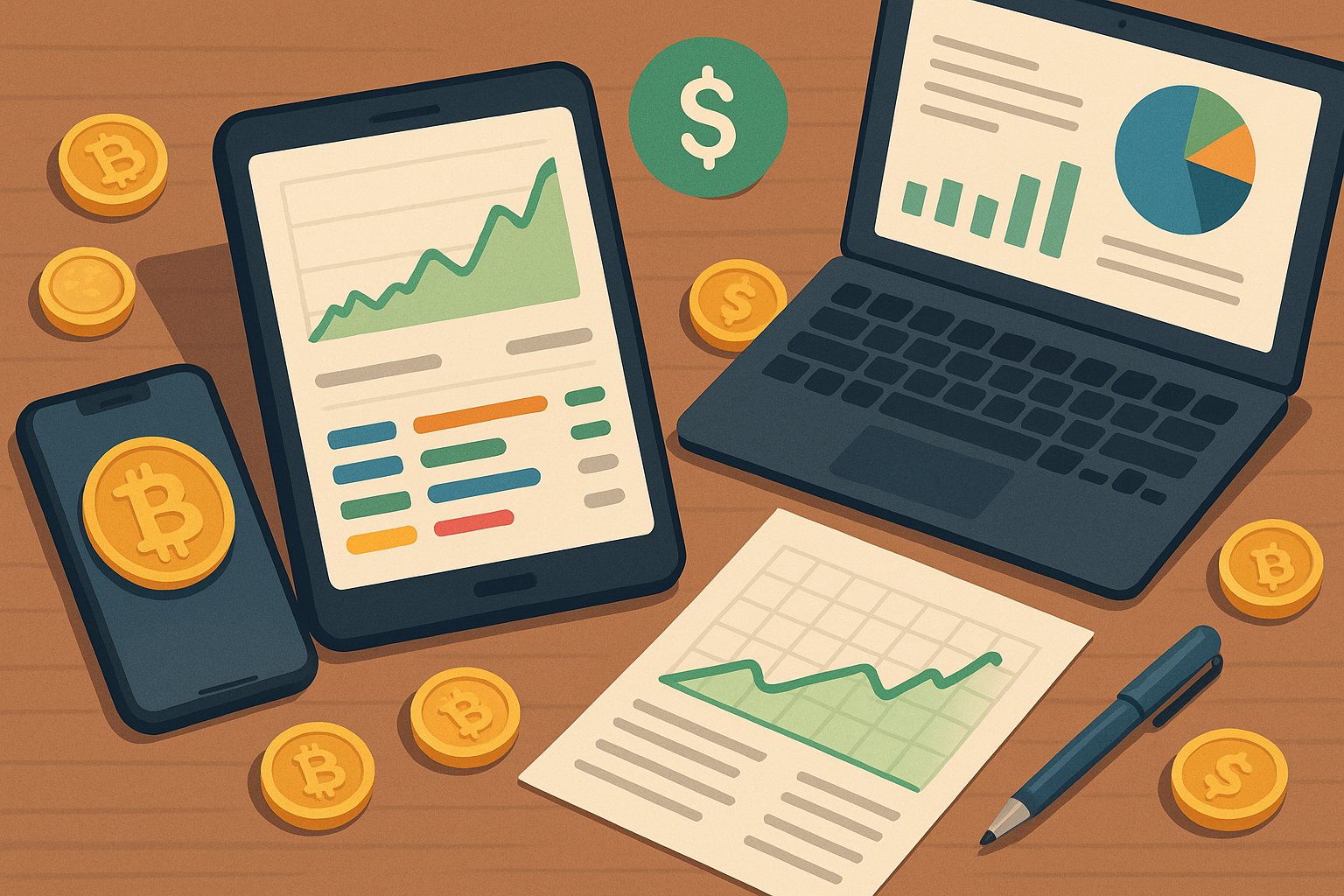Investing in cryptocurrency is exciting, but it can also get confusing—especially if you own more than one coin. Prices change quickly, and it’s hard to know how much your investments are worth at any moment.
That’s why it’s important to track your crypto portfolio.
In this guide, we’ll explain what a crypto portfolio is, why you should track it, and how to do it using simple tools. No experience needed!
Contents
- 1 What Is a Crypto Portfolio?
- 2 Why Is Tracking Important?
- 3 How to Track Your Crypto Portfolio
- 4 1. Use a Crypto Portfolio App
- 5 2. Track with a Spreadsheet
- 6 3. Connect Your Wallets and Exchanges
- 7 Extra Tips for Managing Your Portfolio
- 8 Common Mistakes to Avoid
- 9 Final Thoughts
- 10 Share a link:
- 11 Like this:
What Is a Crypto Portfolio?
A crypto portfolio is a list of all the cryptocurrencies you own. It shows:
-
The coins or tokens you have (like Bitcoin or Ethereum)
-
How much of each coin you own
-
The current value of each coin
-
Your total profit or loss
Think of it like a financial snapshot of your crypto investments.
Why Is Tracking Important?
Here are a few reasons why tracking your crypto is a smart idea:
-
Know Your Profits and Losses
You can see how much you’ve gained or lost over time. -
Make Better Decisions
Tracking helps you decide when to buy, sell, or hold. -
Stay Organized
With many coins on different platforms, a tracker puts everything in one place. -
Tax Reporting
Some countries require you to report your crypto earnings. A portfolio tracker can help you calculate taxes more easily.
How to Track Your Crypto Portfolio
There are three common ways to track your crypto:
1. Use a Crypto Portfolio App
Apps are the easiest and most popular way to track your portfolio. They show live prices, total balance, and profit/loss in real time.
Popular Apps:
-
CoinMarketCap App (Free and easy to use)
-
CoinGecko Portfolio
-
Delta
-
Blockfolio (Now FTX App)
-
Zerion (Great for DeFi users)
Features You’ll Find in Most Apps:
-
Add coins manually or by syncing your wallets
-
Real-time market prices
-
Graphs showing portfolio performance
-
Price alerts
-
News updates
Tip: Start with a free app like CoinGecko or CoinMarketCap if you’re a beginner.
2. Track with a Spreadsheet
If you prefer to keep things simple and manual, use a spreadsheet (like Google Sheets or Excel).
Here’s what to include:
-
Name of coin (e.g., BTC, ETH)
-
Date of purchase
-
Amount bought
-
Price at time of purchase
-
Current price (update this manually or use live price formulas)
-
Total value
-
Profit/loss
Pros:
-
Full control over your data
-
No need to trust a third-party app
Cons:
-
You must update it yourself
-
No real-time alerts or graphs
3. Connect Your Wallets and Exchanges
Some advanced apps let you connect your crypto wallets or exchanges (like Binance, Coinbase, or MetaMask). This allows your portfolio to update automatically when you buy or sell.
How it works:
-
Use an API key from your exchange or wallet
-
Link it to your tracker app
-
The app fetches your balances and updates in real time
Note: Be careful with security. Always use read-only API keys and don’t share private keys or passwords.
Extra Tips for Managing Your Portfolio
-
Diversify: Don’t put all your money into one coin. Spread your risk across several assets.
-
Set Goals: Know what you want—short-term profit, long-term holding, or passive income.
-
Track Only What You Own: Avoid adding coins you don’t actually have—it can make your portfolio look bigger than it is.
-
Review Weekly: Prices change fast. Check your portfolio at least once a week.
-
Use Security Features: Protect your apps with PINs, passwords, or two-factor authentication (2FA).
Common Mistakes to Avoid
-
Forgetting to record a purchase or sale
-
Tracking coins you lost access to
-
Not backing up your data
-
Overchecking your portfolio (causes stress!)
Final Thoughts
Tracking your crypto portfolio is one of the most important habits for any investor. It helps you stay in control, see your progress, and make smarter decisions. Whether you choose an app, a spreadsheet, or both—start simple and stay consistent.
As you grow your knowledge, you’ll find the best system that works for you. Even if you’re just starting out, tracking your coins from day one will make your crypto journey easier and more successful.




